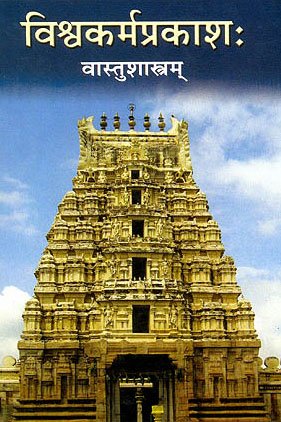Mrigaraja, Mriga-raja, Mṛgarāja: 12 definitions
Introduction:
Mrigaraja means something in Hinduism, Sanskrit, Marathi. If you want to know the exact meaning, history, etymology or English translation of this term then check out the descriptions on this page. Add your comment or reference to a book if you want to contribute to this summary article.
The Sanskrit term Mṛgarāja can be transliterated into English as Mrgaraja or Mrigaraja, using the IAST transliteration scheme (?).
In Hinduism
Vastushastra (architecture)
Source: Wisdom Library: Vāstu-śāstraMṛgarāja (मृगराज):—The Sanskrit name for a classification of a ‘temple’, according to the Viśvakarmaprakāśa and the 2nd century Matsyapurāṇa, both featuring a list of 20 temple types. In the Matsyapurāṇa however, the name for this temple category is Mṛga. This list represents the classification of temples in South-India.
Mṛgarāja is found in another list in the Samarāṅgaṇasūtradhāra, chapter 63, where it is listed in the group named Nāgara, containing 20 different prāsādas (temples/buildings).

Vastushastra (वास्तुशास्त्र, vāstuśāstra) refers to the ancient Indian science (shastra) of architecture (vastu), dealing with topics such architecture, sculpture, town-building, fort building and various other constructions. Vastu also deals with the philosophy of the architectural relation with the cosmic universe.
Languages of India and abroad
Marathi-English dictionary
Source: DDSA: The Molesworth Marathi and English Dictionarymṛgarāja (मृगराज).—m (S Chief of beasts.) Poetical terms for the lion.
Source: DDSA: The Aryabhusan school dictionary, Marathi-Englishmṛgarāja (मृगराज) [-pati-vara, -पति-वर].—m A lion.
Marathi is an Indo-European language having over 70 million native speakers people in (predominantly) Maharashtra India. Marathi, like many other Indo-Aryan languages, evolved from early forms of Prakrit, which itself is a subset of Sanskrit, one of the most ancient languages of the world.
Sanskrit dictionary
Source: DDSA: The practical Sanskrit-English dictionaryMṛgarāja (मृगराज).—
1) a lion; शिलाविभङ्गैर्मृगराजशावस्तुङ्गं नगोत्सङ्ग- मिवारुरोह (śilāvibhaṅgairmṛgarājaśāvastuṅgaṃ nagotsaṅga- mivāruroha) R.6.3.
2) the sign Leo of the zodiac.
3) a tiger.
4) the moon. °धारिन्, °लक्ष्मन् (dhārin, °lakṣman) m. the moon.
Derivable forms: mṛgarājaḥ (मृगराजः).
Mṛgarāja is a Sanskrit compound consisting of the terms mṛga and rāja (राज).
Source: Cologne Digital Sanskrit Dictionaries: Benfey Sanskrit-English DictionaryMṛgarāja (मृगराज).—m. a lion, [Vikramorvaśī, (ed. Bollensen.)] 70, 13.
Mṛgarāja is a Sanskrit compound consisting of the terms mṛga and rāja (राज).
Source: Cologne Digital Sanskrit Dictionaries: Cappeller Sanskrit-English DictionaryMṛgarāja (मृगराज).—[masculine] lord of the beasts (lion or tiger).
Source: Cologne Digital Sanskrit Dictionaries: Aufrecht Catalogus CatalogorumMṛgarāja (मृगराज) as mentioned in Aufrecht’s Catalogus Catalogorum:—poet. [Sūktikarṇāmṛta by Śrīdharadāsa]
Source: Cologne Digital Sanskrit Dictionaries: Monier-Williams Sanskrit-English Dictionary1) Mṛgarāja (मृगराज):—[=mṛga-rāja] [from mṛga > mṛg] m. ‘king of beasts’, a lion, [Mahābhārata; Rāmāyaṇa; Raghuvaṃśa] etc.
2) [v.s. ...] the zodiacal sign Leo, [Varāha-mihira’s Bṛhat-saṃhitā]
3) [v.s. ...] a tiger, [Mahābhārata]
4) [v.s. ...] the moon (See ja-lakṣman)
5) [v.s. ...] Name of a poet, [Catalogue(s)]
[Sanskrit to German]
Sanskrit, also spelled संस्कृतम् (saṃskṛtam), is an ancient language of India commonly seen as the grandmother of the Indo-European language family (even English!). Closely allied with Prakrit and Pali, Sanskrit is more exhaustive in both grammar and terms and has the most extensive collection of literature in the world, greatly surpassing its sister-languages Greek and Latin.
Kannada-English dictionary
Source: Alar: Kannada-English corpusMṛgarāja (ಮೃಗರಾಜ):—
1) [noun] = ಮೃಗಪತಿ - [mrigapati -] 1, 2, 4 & 5.
2) [noun] the moon.
Kannada is a Dravidian language (as opposed to the Indo-European language family) mainly spoken in the southwestern region of India.
Nepali dictionary
Source: unoes: Nepali-English Dictionary1) Mṛgarāja (मृगराज):—n. 1. lion; 2. tiger;
2) Mṛgarāja (मृगराज):—n. Bot. heliotrope;
Nepali is the primary language of the Nepalese people counting almost 20 million native speakers. The country of Nepal is situated in the Himalaya mountain range to the north of India.
See also (Relevant definitions)
Starts with: Mrigarajadharin, Mrigarajaghosha, Mrigarajalakshman, Mrigarajata, Mrigarajavishtara.
Full-text: Mrigarajadharin, Mrigarajata, Mrigarajalakshman, Mriga, Tanucchada, Nagara, Samvrit, Pracanda, Raja, Lakshman, Eni, Vallabha, Vada.
Relevant text
Search found 8 books and stories containing Mrigaraja, Mrga-raja, Mṛga-rāja, Mṛgarāja, Mrgaraja, Mriga-raja; (plurals include: Mrigarajas, rajas, rājas, Mṛgarājas, Mrgarajas). You can also click to the full overview containing English textual excerpts. Below are direct links for the most relevant articles:
Maha Prajnaparamita Sastra (by Gelongma Karma Migme Chödrön)
Act 5.1: The Buddha shakes the trisāhasramahāsāhasralokadhātu in six ways < [Chapter XIV - Emission of rays]
IV. The perfections are causes and conditions of the thirty-two marks < [Part 3 - Possessing a body endowed with the marks]
6. Birth and the thirty-two marks (lakṣaṇa) < [Part 4 - The Bodhisattva in the Abhidharma system]
The Matsya Purana (critical study) (by Kushal Kalita)
Part 2.2 - Temple (prāsāda) architecture in the Matsyapurāṇa < [Chapter 7 - Art and Architecture in the Matsyapurāṇa]
Harshacharita (socio-cultural Study) (by Mrs. Nandita Sarmah)
5. Fauna (different types of animals) < [Chapter 7 - Environmental awareness and Hygiene Conciousness]
Mahabharata (English) (by Kisari Mohan Ganguli)
Section CXXI < [Rajadharmanusasana Parva]
Vastu-shastra (5): Temple Architecture (by D. N. Shukla)
Dramaturgy in the Venisamhara (by Debi Prasad Namasudra)
Life and date of Bhaṭṭa-Nārāyaṇa < [Chapter 1 - Introduction]